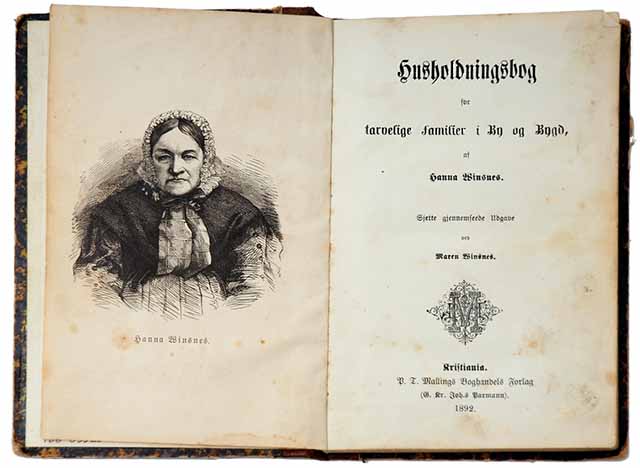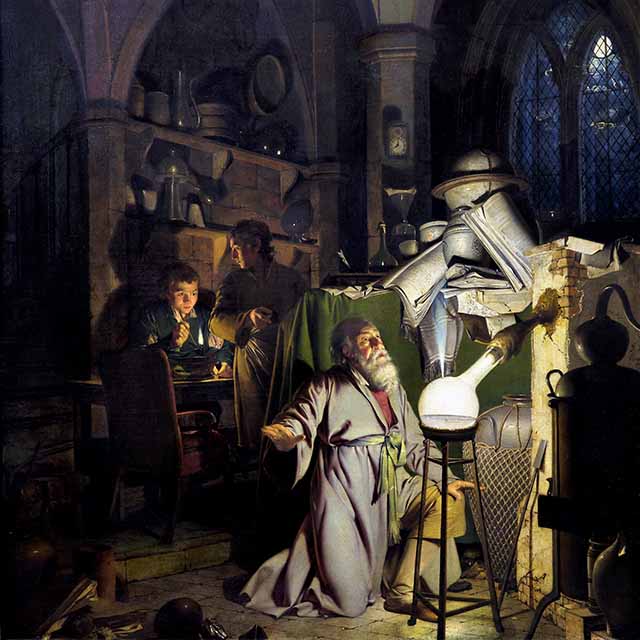In 1888 a dictionary was published, called A Glossary of Words Used in the Neighbourhood of Sheffield, and in it there is a word listed — lant. According to the dictionary the word lant means stale urin, and this stale urin — the lant — was “preserved in a tank, and having been mixed with lime, used for dressing wheat before it was sown to prevent birds from picking the seeds up.”
In the Norwegian bokmål and nynorsk dictionaries that I have access to, as well as in my Concise Dictionary of Old Icelandic, the words land and hland are simply described as “urine from domestic animals.” Neither Webster online, nor my New Oxford American Dictionary lists land as having this meaning, but Collin’s Dictionary Online defines it as “stale urine, formerly collected for its ammonium content, used esp in household cleaning and manufacturing processes.”
I found another description of this particular application — as cleaning agent — in an old Norwegian book which was used for teaching at home economics schools. The book is titled Husholdningsbog for tarvelige familier i By og Bygd (which translates to something like Home economics for poor families in cities and in the countryside). The book is written by Hanna Winsnes, and here’s from one of the very first pages:
Blækpletter paa hvidt Tøi. De maa aftages, saasnart de er komne paa. Først legger man Tøiet nogle Timer i Urin; derpaa vasker man Pletten i tyk sur Melk, avskyller den og vasker det derpaa i Sæbevand. Kan det derefter komme på Bøg, saa er det saa meget bedre.
[My translation:] Ink stains on white clothes. They need to be taken off as soon as they get on the clothes. Firstly, one soaks the clothes in urine for a few hours; thereafter one washes the stain in thick, sour milk, rinses it and washes it in soap water. If it could then be laid out on beech wood(?), it’s even better.

So yes, urine — and particularly stale urine — has not only been used to keep birds off the newly sown seeds, but has also been turned to practical use for all kinds of other things. So many things, really, there’s no wonder we would have a specific word for it. As a matter of fact what’s perhaps strange is that we don’t any longer have a word in common use for stale urine. It has, for example, been used as a mordant when dyeing (I used stale urine to dye wool yarn), it’s been used for cleaning clothes, for tanning hides, for scouring wool, for whitening teeth, as fertilizer, to make saltpeter (which is then used to make gunpowder), as additive to ale (for flavor!), to break witches spells…
See? It’s magic!
And here’s what’s even more magical (although, one could of course argue this is really just science): In 1669 German alchemist Hennig Brand stumbled across white phosphorus while searching for the Philosopher’s Stone, in effect investigating if he could use urine to make gold. Phosphorous thus became the 15th element discovered. It’s Brand’s discovery of phosphorous that is depicted in Joseph Wright of Derby’s 1771 painting The Alchemist Discovering Phosphorus. (Long title: The Alchymist, In Search of the Philosopher’s Stone, Discovers Phosphorus, and prays for the successful Conclusion of his operation, as was the custom of the Ancient Chymical Astrologers.)
Brand’s method was for a long time obscure, not to say secret, but if you want to try I believe it went something like this:
Alchemical method to prepare phosphorous
Warning! Phosphorous can be very dangerous, so you probably want to research this a bit more before you try it. For instance, the US Centers for Disease Control and Prevention warns that the danger with phosphorous is, among many other things, that it “spontaneously ignites on contact with air, producing toxic fumes (phosphorus oxides).” Also: “Exposure to white phosphorus may cause immediate burns that heal slowly.”
- Boil urine to reduce it to a thick syrup. I read somewhere that Brand started out with 5,500 litres of urine, and ended up with 120 grams of phosphorus … so, you’ll need a lot! (Brand thought it had to be stale urine, but that’s not accurate. Then again, if you are collecting 5,500 liters of urine, logistically most of it will likely go stale before you start the experiment.)
- Heat until a red oil distills up from it, and draw that off.
- Allow the remainder to cool, where it consists of a black spongy upper part and a salty lower part.
- Discard the salt, mix the red oil back into the black material.
- Heat that mixture strongly for 16 hours.
- First white fumes come off, then an oil, then phosphorus.
- The phosphorus may be passed into cold water to solidify.
Bibliography
- Addy, Sidney Oldall. A Glossary of Words Used in the Neighbourhood of Sheffield. Pub. for the English Dialect Society by Trübner, 1888.
- Encyclopædia Britannica. 11th. ed. 29 vols. Cambridge: Cambridge University Press. 1910-1911. s.v. “bleaching.”
- McKean, Erin. The New Oxford American Dictionary. 2nd ed. New York: Oxford University Press, 2005.
- Fownes, George. Elementary Chemistry Theoretical and Practical. A New American, From the Last and Revised London Edition. Philadelphia: Blanchard and Lea, 1853.
- Winsnes, Hanna and Maren Winsnes. Husholdningsbog for Tarvelige Familier I by Og Bygd. Sjette gjennemseede Udgave Ved Maren Winsnes. Kristiania: Malling, 1892.
- Landrø, Marit Ingebjørg et al. Bokmålsordboka : Definisjons- Og Rettskrivningsordbok. 2. utg ed. Oslo: Universitetsforlaget 1993.
- Weeks, Mary Elvira. “The discovery of the elements. XXI. Supplementary note on the discovery of phosphorus.” In Journal of Chemical Education. Vol 10:5, pp. 302-206. Easton, Pa: American Chemical Society, 1933.
- Zoëga, Geir Tómasson. A concise Dictionary of old Icelandic. Oxford: Clarendon Press, 1926.
